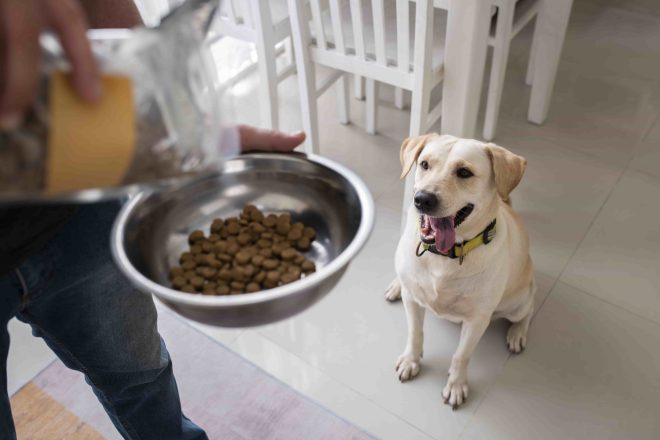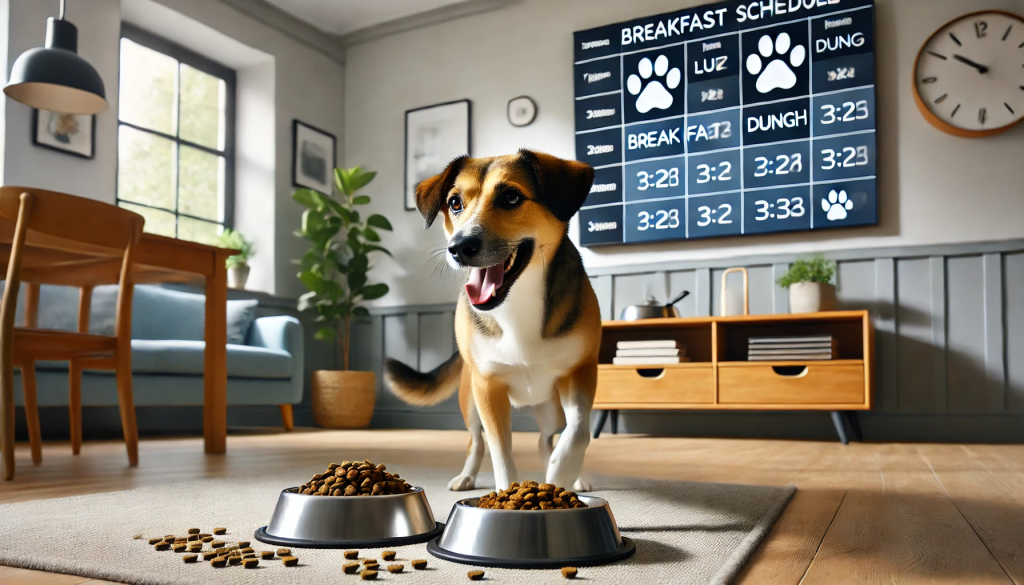
There is more to feeding your dog than just filling their bowl. The truth is, when, what, and how often should I feed my dog? This can make a huge difference in their health and happiness. Just like we humans, dogs need balanced nutrition and a consistent routine to feel their best. The right food and feed schedule can keep your pup healthy, satisfied, and energetic it does not matter whether you are raising a playful puppy, caring for an active adult, or supporting a wise senior.
In this write up, I will walk you through all you need to know about dog food types, portion size,s and feeding schedules by age, so you can confidently provide the best care for your furry friend.
The Importance of Feeding Schedules
Dogs are creatures of habit. When they know what to expect, they feel secure and calmer. Giving your dog food at the same time each day helps regulate its digestion, preventing overeating and reducing begging. A regular schedule also makes it easier to manage potty breaks because dogs usually need to go for potty breaks right after eating.
Overfeeding or leaving food out all day might sound like a good idea, but it often leads to weight gain and unhealthy eating patterns. Instead, planning meals helps control and watch your dog’s appetite, which can alert you to potential health issues early on.
Choosing the Right Dog Food
Not all dog foods are created equal. Here’s a breakdown of the main types:
- Dry kibble: Convenient, affordable, and helps clean teeth. Look for brands with real meat, whole grains, and no unnecessary fillers.
- Wet food (canned): More flavorful and hydrating, often preferred by picky eaters.
- Raw or fresh diets: Can be nutrient-rich but require careful preparation and handling to avoid bacteria.
- Prescription or specialized diets: Recommended by vets for health conditions like allergies or sensitive stomachs.
Make sure you check the ingredients. Dogs need a balance of protein, healthy fats, carbs, vitamins, and minerals. Do not feed your dogs with too many by-products, artificial colors, or excess fillers like corn and soy.
If you are not very sure, talk to your vet or use a trusted feeding calculator from reputable pet food brands like Purina or Dog Food Advisor.

ALT TAG: A domestic dog happily eating dry kibble from a bowl placed on the floor.
How Much Should You Feed Your Dog?
The right portion size depends on your dog’s:
- Age (puppies need more frequent meals)
- Weight and size (small breeds burn energy faster, large breeds need controlled growth)
- Activity level (active dogs need more calories than couch potatoes)
- Health condition (some dogs need special diets)
As a general rule:
- Small breeds (under 20 lbs): 1 to 1.5 cups of food per day, split into two meals.
- Medium breeds (20–50 lbs): 2 to 3 cups per day.
- Large breeds (50–100 lbs): 3 to 5 cups per day.
- Extra-large breeds (100+ lbs): 4 to 6 cups per day.
Make sure you check the feeding guidelines on your dog food bag, then adjust based on your dog’s body condition. If your dog looks too thin, increase slightly. If they’re gaining too much weight, cut back.
Feeding Schedule by Age
Puppies (up to 6 months)
Puppies are known to have small stomachs and big energy needs, so they have to eat 3 to 4 times a day. Split their food evenly into small meals to prevent overeating and support healthy growth.
Adult Dogs (1 to 7 years)
Most adult dogs eat two meals a day. One in the morning and one in the evening. This helps keep their energy stable and throughout the day and helps with predictable bathroom routines.
Senior Dogs (7+ years)
Older dogs often slow down and need fewer calories. Stick to two meals a day, but choose food designed for seniors that is lower in fat, higher in fiber, and rich in joint-supporting nutrients like glucosamine.
Signs You are Feeding Correctly
A well-fed dog will have:
- A healthy weight (you should feel ribs but not see them sharply)
- Shiny coat and bright eyes
- Consistent, firm stools
- Steady energy levels
If your dog seems hungry all the time, loses weight, or gains too quickly, you may need to adjust portions or food type.
Common Feeding Mistakes to Avoid
- Overfeeding: Leads to obesity, which causes joint problems and heart disease.
- Free feeding: Removes structure and makes weight control difficult.
- Too many treats: Treats should make up less than 10% of daily calories.
- Feeding human food: Many foods we eat (like onions, chocolate, and grapes) are toxic to dogs.
Tips for Successful Feeding
- Stick to the same feeding times daily.
- Use a measuring cup for accurate portions.
- Keep fresh water available at all times.
- Transition slowly when switching foods (mix old and new food for 7-10 days).
- Monitor your dog’s weight monthly.
Conclusion
Feeding your dog the right food on a consistent schedule is one of the best ways to keep them healthy and happy. Puppies need multiple small meals, adults do well with two meals daily, and seniors benefit from balanced, age-appropriate diets. Combine this with portion control, quality food, and lots of love, and you’ll give your pup the best life possible.
FAQs
1. Is it okay to feed my dog once a day?
Some dogs can adapt, but most do better with two meals to keep energy and digestion steady.
2. Can I mix wet and dry food?
Yes! Many owners mix kibble with wet food for flavor and variety. Just make sure the total portion matches your dog’s needs.
3. How do I know if my dog is overweight?
Feel their ribs if you can’t feel them easily, your dog may be overweight. Check with your vet for confirmation.
4. Should I change food as my dog ages?
Yes. Puppies, adults, and seniors all have different nutritional needs. Switch gradually when your dog enters a new life stage.
5. What if my dog skips a meal?
If it’s rare and your dog seems healthy, it’s usually fine. But if they regularly skip meals or lose weight, see your vet.
RELATED POST: 6 Best Methods for House Training Adult Dogs (Easy Guide for Owners)
GIPHY App Key not set. Please check settings